70mm Astronomy Binoculars & Tripod Setup Advice
This BinoWizard question is from a reader who is looking to set up a pair of good quality binoculars on their porch for star gazing and some wildlife observation:
 Question:
Question:
We bought a house in West Texas Big Bend area. I am looking for a great pair of binoculars to see the night sky and to look at wildlife from our porch. We are very interested in astronomy.
I became interested in the Celestron Echelon 20x70. The one that received your award for 2 years. I was looking at your website and didn’t see a 2016 Astronomy winner. Just wondering if there was a winner. I love your website and it has been very helpful. I am looking for advice on which pair of binoculars would be best, along with an adapter, and tripod that would work best. There are so many choices, just not sure which one would work best. We would like a good pair that can see the stars.
Budget: I am fine with Celestron Echelon as far as budget (approx $799 / £776). It was just confusing to me to see the Stargazer (I assume Celestron Skymaster?) so cheap and the Echelon so much more. I just didn’t know if it was worth the extra cost. I appreciate your review of both.
My main thing is finding a pair that will last for the next 20 years if taken care of, and yes they will be shared with family members who come to visit.
Answer
Firstly thank you for sending in your question to the BinoWizard and it really helps me in that I can see that you have already conducted a lot of research and know in general which binoculars for astronomy are best. Thus hopefully I can offer you some more personal advice and possible some recommendations to further fine-tune your options.
Binocular Comparisons
As always I find that a great place to start is to create a table that contains the most important features and specifications of a number of binoculars that I feel may be of interest. In this way, I find it makes it much more simple to quickly see which instruments are worthy of further investigation. For more details on this process, you can take a look at my article on how to choose between different binoculars.
highlighted in green are the features or specifications that I feel are either strong points or aspects that are above and beyond what I would expect to find in this price range.
highlighted in red are weaker aspects when compared to the others on the list. Note: this does not mean that this is bad, only that in this area they not quite as good as the best.
Cheap vs Expensive Astronomy Binoculars
In the table above I have purposely added a selection of the MUCH cheaper Celestron Skymaster binoculars for comparison as you do ask why they cost so much less in your question. There are a number of reasons for this price difference:
Quality of Body Components
The more expensive options are built up of parts that are of better quality. For example, all Celestron Echelon and Fujinon Polaris binoculars have an aluminum chassis, whilst the cheaper Skymaster most certainly has a polycarbonate plastic one. These are far cheaper to manufacture and whilst they are more lightweight, they are not as strong and just don’t feel as luxurious.
This theme generally continues throughout the instrument, with higher-end binoculars usually using metal eye-piece housings and focus wheels (not relevant in this case), whilst cheaper ones will keep prices down by employing mass molded plastic ones wherever possible.
Quality of Optical Components & Coatings
Here is usually where we can easily find out the biggest differences between cheap and expensive binoculars, however with Porro prism devices like these differences are not always that obvious.
To achieve the best results, the best roof prism bins use a number of specialized coatings on the prisms to increase the reflectivity and to correct distortions that occur. Cheap ones will either not use these or use lower quality materials and thus don’t deliver anywhere near the same quality of the viewable image.
However the Porro prism design does not need either of these, so in theory, cheap Porro prisms will perform as well as expensive ones and as good as the best roof prisms. However, here is where the actual quality of the glass used becomes a factor. You will often see the very cheapest binoculars use BK-7 (fine borosilicate crown) glass which costs far less than BaK-4 glass to make.
Although, as you can see from the table above all the binoculars listed have BaK-4 glass so what is the difference here? Well rather confusingly, not all BaK-4 glass is created equal and that Chinese made BaK-4 prism glass is slightly different and considered inferior to the Schott made BaK-4 ones, but it is cheaper!
The problem is manufacturers very rarely tell us which is used, but as a good rule of thumb, cheaper instruments made in China usually use the Chinese glass, whilst more expensive devices and especially those manufactured in Japan or Europe will use the higher quality Schott glass.
You will also notice that the lenses used in the Celestron Echelon are advertised as being made in Japan. Here you can be certain that the quality is far greater than those used on their other instruments where they make no mention of where they are made.
Also the optics on the higher end products are Fully Multi-Coated, whilst the SkyMaster’s are only Multi-Coated. The difference here is it means that every single air to glass surface on a full multi-coated device has had multiple coatings of an anti-reflection coating added to it, whilst the cheaper Multicoated ones have only had this applied to some of them. Usually, only the exterior lens surfaces and thus does not deliver anywhere near the same quality or brightness of view. I find that the difference this makes is often substantial and well worth keeping in mind.
Build Quality & Quality Control
Celestron also highlight that their Echelon’s are assembled in the USA as opposed to the others which are put together in their Asian factories. Here I assume they are implying that the level of care and quality control is better.
Diminishing Returns
As with most things: In the beginning, it costs a relatively small amount to make large differences, whilst the closer you get to perfection, the more you have to pay for smaller and smaller improvements. So whilst there is no doubt the more expensive products are better, as to if it is worth it depends on your personal position and what you want to get out of your hobby.
Astronomy Award Winners
You are correct in saying that the Celestron Echelon 20x70 won my award two years running and that in 2016 I did not have an Astronomy winner.
This is just because I am at the mercy as to which binoculars the manufacturers offer up for me to review and last year I did not get the chance to review any long-range / Astro binoculars that I thought were worthy of the award and thus none was given.
I guess I could have re-awarded it to the Echelon but thought that after two years, a third may start to look a little strange!
However I will say that this in no way means that the Echelon is not as relevant today as it was back then. Binoculars evolve far more slowly than electrical devices for example and as such most high quality instruments built 10 years (and definitely 5 years ago) ago are still very much as good and competitive now as they were back then. As a consumer this is great news as it means as long as we choose wisely and get a good quality instrument, they can easily last you a lifetime and which is why I almost always recommend getting the best that you can afford as it most often pays off in the long run.
My Thoughts & Recommendations:
Based on the table above, below are the instruments that I would consider. You will notice that I have made
Celestron Echelon 20x70 or 16x70 Binoculars
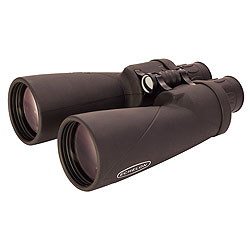 I think with the Celestron Echelon 20x70 binoculars you have an excellent binocular for star gazing as well as long distance terrestrial observation an to this day it remains one of my firm favorites.
I think with the Celestron Echelon 20x70 binoculars you have an excellent binocular for star gazing as well as long distance terrestrial observation an to this day it remains one of my firm favorites.
Whilst I feel that there is no obviously right choice as both have their benefits, I do suggest that you also consider the slightly less powerful 16x70 version because in sacrificing a little power, you get three main benefits:
- A wider field of view, is better for scanning areas in the sky and on land looking for something of interest. It also makes it easier for you to find a particular object that you are looking for. As a novice but enthusiastic astronomer, I often find it difficult to locate the celestial object that I want to observe with a very high powered device, having a wider view makes this task a little easier. Also for wildlife observation, a wider view makes it easier to find and then follow an animal that is moving, especially at closer ranges.
- A larger exit pupil not only makes it easier for you to line your eyes up and get the full view, but the larger diameter tube of light exiting the eye-piece will also usually make for a brighter observable image at night where the pupils in your eyes are at their largest.
- Higher magnifications require thicker glass, which in turn lets through less light. This can lead to a less bright image. However I doubt the differences in this case will be observable, so I would not worry too much about this.
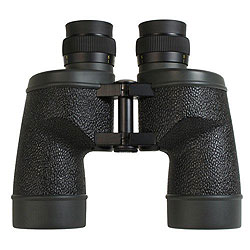 Fujinon Polaris Binoculars
Fujinon Polaris Binoculars
There is no doubting their high quality and for many these Fujinon binoculars are considered to be the gold standard for high end 70mm porro prism binoculars.
However even though I have not actually tested one and so can’t be sure, I personally don’t see from their advertised specifications that these are going to be too far different in terms of quality than the Celestron Echelon’s and so find it hard at their higher price point to recommend them to you above the Echelon’s.
Celestron SkyMaster Pro Binoculars
Update: Since my initial answer to this question, I have now had a chance to test and review a pair of SkyMaster Pro binoculars and as expected, I thought they do make excellent value for money Astro bins. For more, read my full Celestron SkyMaster Pro 15x70 Binoculars Review
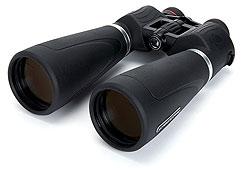 If you would like something a little less expensive, but are not willing to drop down to the level of the ‘standard’ Celestron SkyMaster’s, then the new Celestron SkyMaster Pro Binoculars look to be a very interesting option and to me look like they could offer some excellent value for money:
If you would like something a little less expensive, but are not willing to drop down to the level of the ‘standard’ Celestron SkyMaster’s, then the new Celestron SkyMaster Pro Binoculars look to be a very interesting option and to me look like they could offer some excellent value for money:
Compared to the lower-priced options and quoting Celestron, the “SkyMaster Pro uses superior optics, coatings, internal parts and housing materials” and thus sits in between the very high quality assembled in the USA Echelon’s and the low end ‘standard’ SkyMaster’s.
I like the fact that they have fully multi-coated optics, meaning that ALL surfaces are coated and not just some as is the case on the standard SkyMaster. Add to this that the coatings that they do use are also better because they emphasize that they use their own proprietary XLT coating technology (the same used on the Echelon), which is not the case on the cheaper series.
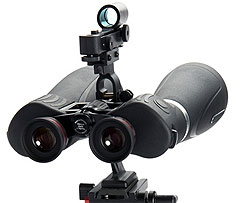 The 20x80mm version has a built-in tripod adapter and both come with what Celestron call their “Reflex Sight Ready” rail (RSR), which accepts an optional red dot finderscope. This makes it easy to attach the finderscope to the binocular so you can easily sight astronomical objects or distant terrestrial targets quickly and accurately.
The 20x80mm version has a built-in tripod adapter and both come with what Celestron call their “Reflex Sight Ready” rail (RSR), which accepts an optional red dot finderscope. This makes it easy to attach the finderscope to the binocular so you can easily sight astronomical objects or distant terrestrial targets quickly and accurately.
Compared to the Echelon and as they do not highlight it, I assume that these do not have the Japanese made lenses and are not assembled in the USA, but they are substantially cheaper.
As I say, for the price, I do like the look of these and their stats are generally good, especially the nice wide field of view of the 15x70 SkyMaster Pro.
Tripod Setup
Update: Please note that the info below is a brief summary, for more comprehensive advice, take a look at My Personal Best Tripod for Binoculars (Astro and Terrestrial uses) which includes advice on all the gear I use and why.
A tripod setup for astronomy and long distance terrestrial observation needs to be flexible and very stable. This is because when you are observing the night sky, the angles are often awkward and because you are observing really distant and sometimes tiny (in the view) objects for longer periods of time any tiny movement does negatively affect the view.
So whilst I have not used a huge selection of tripods as this is not my specialty, I have had quite a few over the years. The Vanguard ABEO Pro 283CGH tripod kit is excellent and I highly recommend it. The kit includes the Abeo Pro 283CT Carbon Tripod and their GH-300T Pistol Grip Ball Head that work very well together.
However if as I assume you are not moving about, rather keeping it on your porch, then a lightweight tripod may not be essential and you can save some money and or make your setup just little more robust by going for an aluminium tripod.
Here I can highly recommend the Bresser BX-5 PRO Video Tripod kit that comes with a pan-handle video fluid head on-top and the integrated ball head under it giving you a lot of flexibility as well as ease of use. It also easily converts to a monopod which is another very handy feature that I like and which may interest you.
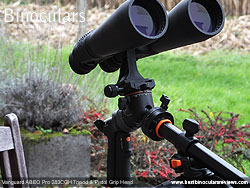 Another option is the Vanguard Alta Pro 263AT Tripod that is just about as sturdy and adjustable, but costs less.
Another option is the Vanguard Alta Pro 263AT Tripod that is just about as sturdy and adjustable, but costs less.
It may also may be worth taking a look at the older Vanguard GH-100 Pistol Grip Ball Head which once again has most of the functionality of the GH-300, but without the remote shutter release on the trigger, which unless you are using it for photography is not of any use anyway.
Tripod Adapters
For some ideas and options take a look at my article on Tripod Adapters.
Of those listed on this page, I use the Vanguard BA-185 Adapter that is inexpensive and has served me well through the years.
Further Questions & Answers
Below are the questions I received from Brett after I sent him my initial advice and suggestions as well as my answers to them:
Question: I bought the Echelon 16 x70 and I went ahead and purchased an Orion Tripod L Adapter #05251 from High Point Scientific. I know it’s not the one we talked about, but they said it was a good one that would fit the Echelon.
I have not purchased a tripod yet. Not sure which one to get, I looked at the Vanguard Pro 283CGH and it cost $550.00. That was more than I expected, but maybe due to the weight of the binoculars I won’t have a choice. I was hoping to get a good quality tripod for under $200 but maybe that is unrealistic.
Answer
Hi Brett, you most certainly do have a choice, take a look at the Vanguard Alta Pro 263AT Tripod that I also suggested above. It is pretty much the same as the carbon 283CGH tripod from Vanguard, but is metallic so heavier, but just as (probably more) stable.
On Sites like Adorama, B&H and Amazon.com it is for sale at $129 by itself or $178 as a kit with the pistol grip head unit: Where to Buy: Vanguard Alta Pro 263AT Tripod Kit
Further Reading
- Binoculars for Astronomy
- My Personal Best Tripod for Binoculars (Astro and Terrestrial uses) which includes advice on all the gear I use and why.
- Best 10x50 Binoculars for Astronomy
- Space.com’s Best Astronomy Binoculars 2015
- Cheap vs Expensive Binoculars
 Ask the BinoWizard
Ask the BinoWizard
If you are looking to get some binoculars and can’t choose between a number of options, or if there is something about optics in general that you don’t get then please feel free to contact me for some personal optics advice. Ask the BinoWizard Here

 Article | Posted by Best Binocular Reviews
Article | Posted by Best Binocular Reviews 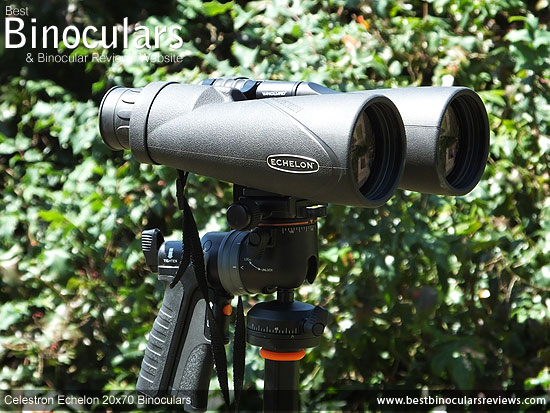
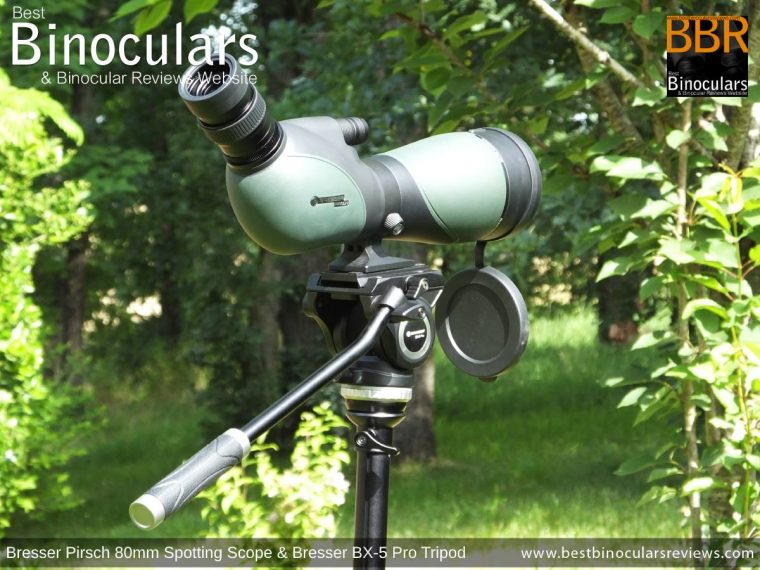

 Categories:
Categories:  Tags:
Tags: 
